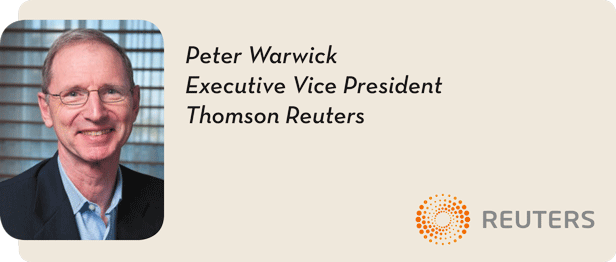
The Global Stage
Tuesday, April 1, 2014
By Kevin Moe
Aftershocks across the globe in the aftermath of the 2008 recession are still being felt. Companies have found themselves with new markets to target, and new multinationals are taking root in emerging economies. Each new development brings with it a host of opportunities and challenges.
Emerging markets in developing economies are often of interest to companies operating on a global scale, but during a recession, they can be of even greater interest, says Professor Michael Houston, associate dean of Global Initiatives and the Ecolab-Pierson M. Grieve Chair in International Marketing. “Some developing economies did not show the effects of the recession as measured by GDP growth. Examples include the key economies in sub-Saharan Africa,” he says. “These economies often reflect more rapid post-recessionary growth as well. A key impact of the recession was therefore the markets companies were looking at to realize growth in global sales. And the emerging markets were clear choices in terms of market selection.”
As new markets enter the field, multinationals have some adjusting to do. “Brand portability is a key issue in international markets,” says Professor Akshay Rao, the General Mills Chair in Marketing. “We see significant country-of-origin effects. In India and China, for example, Korean and Japanese auto manufacturers are highly visible in the middle market, while upscale European luxury car makers are beginning to make their presence felt as well. There even is a Porsche dealership in Bangalore, India.
While “country-of-origin” influences consumers’ perceptions about the quality of products, there are other persuaders at work. “Consumer behavior among various cultures is coming in for increasing scrutiny,” Rao says. “For example, in most Eastern societies, group decision-making is the norm, and most purchases have a ‘collectivist’ flavor, in contrast to the ‘individualistic’ nature of decision-making in the West. This implies that advertising and persuasion strategies are becoming more culture-specific, and Western firms are beginning to recognize this.”
But there is also some blending going on, as the increased knowledge about foreign cultures among consumers is causing a form of biculturalism among otherwise monocultural individuals, says Associate Professor of Marketing Carlos Torelli. “As a result, these people exhibit some culture-switching effects similar to those exhibited by biculturals,” he says. “This marketplace multiculturalism is leading to the emergence of a global mindset among people around the world. This increases the identification of a global culture characterized by cosmopolitanism and heightens interests in global events.”
There is also more recognition on the international stage of the impact of climate change, but it is not affecting purchasing as much as one would think. “In India and China, there is greater concern regarding the use of fossil fuels and their impact on local climate events and rising ocean levels,” Rao says. “While commentary regarding these issues is visible, with associated emphasis on green products and processes, consumer behavior—with respect to purchasing—lags.”
In another turn of events, firms from developing countries are making significant inroads into Western markets, both in terms of market share and in terms of ownership, Rao says. And established multinationals are finding countries with emerging economies attractive for relocation. Supply Chain and Operations Associate Professor Enno Siemsen says companies had been motivated to move to China in the past because of the cheap labor pool, but that is on the verge of drying up. “The labor cost argument is really gone by now,” he says. “To move to China now wouldn’t be because of labor costs but because of markets. The products that will be manufactured there will be geared to the Asian market.”
So where are companies looking at setting up shop? “I think Mexico will be used more,” Siemsen says. “There’s the trade agreement with the U.S. and a shorter distance to move merchandise—just a few days by truck.” Other areas where he expects to see company relocation include low-cost countries in Asia such as Thailand, Vietnam, Indonesia, and Malaysia. However, Siemsen points out that these countries do not have China’s 2,000-year history of manufacturing and its established proximity to the rest of the supply chain. “It’s not easy for others to imitate that,” he says. “I don’t think we’ll see another China.”
U.S. Energy Production is a Bright Spot
The financial crisis ended up having a ripple effect on all aspects of the global economy, says Doug Baker. Demand for products and services lagged, employment levels fell, access to capital became more difficult, and aid to developing nations slowed. These impacts first hit the developed markets and then spread throughout the world.
“Businesses slowed the implementation of growth and capital improvement projects to focus on strategies to effectively navigate the economic conditions,” Baker says. “Ecolab was able to manage these challenges well, but not all enterprises were as fortunate. The economic downturn led to great fractures in global trust, and the heightened uncertainty has impacted almost all business decisions, especially those related to investment, hiring, and growth.”
However, there was one bright spot during this period—the unprecedented rise in U.S. energy production. “It has significantly improved the attractiveness of the U.S. market,” Baker says. “The industry’s shift toward the U.S. and related increase in capital will provide economic benefits for decades to come.”
Globally, trade and capital flows are starting to improve, but they are still a concern, Baker says. “Moving forward, how each country chooses to manage trade will affect the global economy. Countries that choose to enact protectionist trade policies will significantly limit growth of the global marketplace,” he says. “At the end of the day, I do not believe the impacts of the recent economic downturn will be major factors in our long-term competitiveness. We operate in a global marketplace, and the global markets will recover and accelerate.”
Agility is Key to Sustainable Growth
As the world and its consumers have changed dramatically since 2008, organizations have had to move quickly and strategically to position themselves for sustainable growth. “There are several demographic trends driving growth opportunities, including women’s increasing role in the economy and the progress of emerging markets,” says Thia Breen. “In many countries around the world, more women are entering the middle class and enjoying higher disposable incomes. This increased purchasing power is changing the dynamic of global business; impacting the consumer base for many organizations and how they innovate, market, and sell to women.”
Breen adds that strong market growth is coming from emerging markets such as China, the Middle East, and Latin America, which have a lot of space for innovation. “The middle class is growing, and consumers are younger,” she says. “Consumers’ expectations in these markets are advanced, and they expect the newest groundbreaking technology and products.”
However, because the world economy is continually in a state of flux as emerging markets grow rapidly, many established markets experience softening at the same time. “The key to sustainable growth during economic turbulence is agility–the ability to grow in both strong and soft markets,” Breen says. “Many organizations that do this well are able to quickly read and convert market information into insights and balance their investments across consumer demographics and geographies to maximize high-growth opportunities.”
Breen says that, in the future, organizations will need to look at their business and consumers at a granular level. “Companies will need to identify consumer differences across geographies and platforms, how these differences impact consumer behavior, and what strategies need to be in place to capitalize on these behaviors and preferences,” she says. “This is where growth opportunities lie. The future is now.”
Valuable Lessons to Remember
There are several lessons to take away from the recent recession, says Marilyn Carlson Nelson. “Firstly, when competitors are fighting over a smaller piece of the pie, there is a temptation to cut corners on products and services, tamp down R&D investments, and retreat from growth opportunities,” she says. “In actuality, this may not be the time to pull in your horns. Certainly, more needs to be done with less, but when the competition is retreating, opportunities surface. It was during the recession that our travel management company, Carlson Wagonlit, grew to become the world’s largest travel management company and we invested heavily in introducing our overseas Radisson Blu brand to the U.S.”
Carlson Nelson says another lesson is to manage to the inevitable. “One of the reasons that we were able to continue our growth trajectory is that we anticipated a downturn. This is not to say that we had a crystal ball when it came to predicting this specific situation, but Carlson, now in its 76th year, has weathered many an economic downturn,” she says. “We have always respected capital, maintained fiscal prudence in our operations, remained nimble in our decision-making process, and always prioritized the customer experience.”
But perhaps the most important lesson of all lessons, Carlson Nelson says, is that the recession confirmed quite emphatically that this is an interconnected world. A world where the transgressions of business leadership can have devastating consequences for the average person—not just down the block, but many thousands of miles away and often times in developing countries where the population is just getting a toehold on capitalism and democratic systems. “This is one of the reasons I have been so motivated for the last few years to co-teach a course with Professor Myles Shaver on corporate responsibility for Executive MBA students,” she says. “Clearly, business must be a force for good in our world—now more than ever before.”
3 Things to Watch During the Economic Recovery
When compared with the shocks associated with the 2008 recession, the circumstances today are a night-and-day proposition, says Bob Duffy. With a modest global economic recovery underway, the U.S. has reasonably good short-term and longer-range prospects, Europe is pulling itself out of negative growth, and key emerging markets such as China and India are restoring dynamism to their economies.
All of these developments have affected international competition in a big way, and Duffy says there are three related factors that are worth watching. First, advanced economies are staging a comeback. “The conventional wisdom has been that the emerging markets are leaving behind the advanced economies in terms of economic dynamism and share of global output,” he says. “That is still true, but perhaps less than many have argued.” There also is evidence to suggest that some of the high-growth levels experienced by emerging markets may not be sustainable.
“These considerations have profound implications for competitiveness,” Duffy says. “It means that investors are taking a hard look at developed as well as emerging economies when they make their investment decisions.”
A second factor is that the U.S. has reached an important inflection point when it comes to competitiveness. “The current recovery—propelled by renewed macroeconomic growth, the shoring up of the housing market, the decline in unemployment, and rises in business confidence—is the real thing,” he says. “At A.T. Kearney we do a global survey of business leaders on their attitudes regarding foreign direct investment—The Foreign Direct Investment Confidence Index. This year, for the first time in a decade, the U.S. was at the top of the list as a target for investment.”
The third factor is a return of history when it comes to global capital flows. “The decision by the Federal Reserve System to begin tapering is, no doubt, the beginning of a global shift in the direction and volume of global investment,” he says. Several emerging markets saw their exchanges drop dramatically last summer when the Fed merely mentioned the possibility of a taper.
“Obviously the recession was a massive wake-up call to business. It sounded alarms about the changing nature of structural risk, the sheer complexity—and lack of transparency—of the financial system, the changing role of government regulation, and the capacity of business to weather sudden decompressions in the financial markets,” Duffy says. “Now it falls on business leaders, especially in the United States, to position their companies to ride the wave of economic recovery. It will not be an easy task. The global business landscape will become increasingly volatile and complex, especially as countries enter into the post-recession period of renewed interest rates and higher competition for investment.”
New Players Have Changes the Economic Game
On the global stage, international competition has been intensifying, making new players in the market, says James Lawrence, citing the Chinese company Lenovo purchasing IBM’s mid-range server business and the Indian-based Tata acquiring Jaguar Cars. “There are multinationals now that are not American, not Japanese, and not European, that’s a big change,” he says.
Having more players in the global economy has also led to another effect, Lawrence says. “American workers, be they knowledge workers or manufacturing workers, are now competing in a global marketplace. We’ve been bemoaning in this country that we have not seen middle-class wages go up,” he says. “The reason is our middle class is competing against a middle class throughout the world.”
Another effect is that capital is flowing much more freely through the world, allowing good ideas anywhere in the world to be financed. “If you have a good idea you can take advantage on a global basis. It’s a great deal for innovators, for providers of capital, and for the rising middle class around the world,” Lawrence says. “It’s more of a challenge if you are an industrial worker in this country or a middle-of-the-road knowledge worker.”
Lawrence says places like the University of Minnesota need to train people so they can win in this contest. “For example, at the Carlson School, we have a Master in Business Analytics right now. It makes tremendous sense. People with that training can write their own ticket because there is a much greater demand than supply,” he says.
Lawrence also points to one U.S. advantage that he thinks will turn the economic tables again—acquiring new sources of energy and new exploration techniques for oil. “We’re not only going to be energy independent but a land of cheap energy,” he says. “It will lower the cost of manufacturing in this country and give everyone who happens to be an American citizen an advantage over everyone else in the world. The trend is there, and this is something that is going to happen in the next 10 years.”
Understand Your Workforce's Level of Engagement
For a company with 3,800 employees in 45 countries, one of H.B. Fuller’s key challenges is managing a global business. In some of its market segments, it serves global customers, and in others, it serves local, but operates globally. “We don’t consider H.B. Fuller to be a U.S. business with operations overseas; we are truly global in how we approach our day-to-day operations,” says Jim Owens. “The challenge for a global business is to develop an organizational structure that both supports achieving the company’s strategy and works effectively across a wide variety of geographies and cultures. Managing a global organization also requires a solid infrastructure to support a more mobile workforce. Investing in technology that can be accessed anytime, anywhere by our employees has been crucial to creating the infrastructure to achieve our goals.”
One of the key challenges for any business today is finding, hiring, and keeping the most talented individuals. “We have invested time and resources in developing our employee value proposition, marketing the company in a very professional manner, developing strategic alliances with key universities that produce the best graduates in the disciplines that are critical to our strategy, and creating the working environment that will help us attract and keep these folks,” Owens says.
Finding and retaining a talented team has always been a challenge for any business, but there is more complexity today, especially given the advent of social media for recruitment (LinkedIn) and commentary about the workplace (Glassdoor). There are also different drivers for engagement and retention with the different generations in the workforce.
“A key imperative for any leader is to understand the levels of engagement of his or her workforce,” Owens says. “Paying attention to engagement and developing the right strategies to enhance it should be a key focus for any leader.” H.B. Fuller conducts a global engagement survey every one to two years and establishes teams across the world to address the key feedback from employees. “We hold ourselves accountable for improvement in engagement scores over time,” Owens says. “Through the engagement action teams at H.B. Fuller, we have employee-driven solutions to a wide range of organizational challenges.”
Finally, developing a cadre of strong leaders with a global mindset is crucial to any global organization, Owens says. “Finding and developing those who have the capability to devise strategy and turn it into action, to lead complex change in their business, to identify and develop key talent, and to drive global collaboration is really important,” he says. “Providing them with the right development opportunities and creating the right networking opportunities for them is also hugely important.”
Food Production Must Keep Pace with Soaring Global Demand
Agribusiness and food production are among the greatest growth industries of our era, a phenomenon that is being driven by global megatrends of population growth and improving diets for an expanding middle class in many emerging markets worldwide, says Chris Policinski. Statistics capture the magnitude of this growth opportunity:
- Global population is projected to grow from 7 billion to over 9.5 billion by 2050
- This unprecedented pace of population growth will require a 70 percent increase in food production during the next four decades
- More food will need to be produced during the next 40 years than during the past 500 years
“While this outlook offers a tremendous growth opportunity for Land O’Lakes and others in the food industry, there are also significant challenges in meeting this soaring demand, including a critical shortage of natural resources,” Policinski says. He points out that at most, only 12 percent more arable land is available globally and only five percent more land is projected to be cultivated by 2050. At the same time, demand for water will outstrip supply by 40 percent by 2030.
“Land O’Lakes is addressing these opportunities and challenges through a focus on productivity and sustainability in agricultural production by helping farmers and ranchers improve their productivity—get more output (crops, dairy, or livestock production) per unit of input (land, water, energy, and the like),” he says. “Increasing agricultural productivity is the critical element of meeting the challenges of growing more food to meet the needs of a growing global population in an increasingly sustainable manner.
“Our strategies include leveraging the latest technologies such as satellite imagery and ‘big data’ analysis to create new insights that drive innovation in how farmers manage their operations. The goal of increasing agricultural productivity is vital to success in delivering against the challenges of global food security and sustainability and in fact, political stability. The stakes are high; we have to get this right.”
The Challenge Now is Increasing Food Production
Immediately prior to the 2008 recession, the world saw a run-up in food commodity prices. The recession exacerbated the trend. This did two things, says Jim Prokopanko. First, it brought considerable governmental attention to the issue of food security in many regions of the world. Second, it incented more investment in the production of crop nutrient products.
“As a result, we have seen an increased level of global competition as China, Saudi Arabia, Russia, and Morocco have intensified the competitive landscape with investors working to gain from the higher demand and prices,” he says. “As well, governments in many countries encouraged or incented local production of grain and oilseed production, along with the necessary means for agricultural production such as domestic crop nutrient production.”
The collapse of many commodity prices also added a significant amount of market place volatility and price risk. “This great volatility has resulted in our customers increasingly looking for assistance in helping them work through volatile markets, and as a result, we’ve enhanced our risk management offerings, which takes pressure off of customer inventory, but ensures product is available when needed,” Prokopanko says.
Some countries attempted to control the volatility in food and commodity prices by applying export restrictions or import subsidies. “These governmental attempts to control prices and supply or demand distorted natural economic and market place signals and, as a result, hindered economic growth and crop yields,” he says. “In certain instances, we scaled back our investment in volatile regions and shifted that investment to more stable and growing markets. To help alleviate crop subsidy challenges, we work closely to educate both policymakers and farmers on the importance of balanced crop nutrition, which is responsible for up to 60 percent of yields.”
Prokopanko says the challenge remains to feed more than nine billion people by the middle of this century and to accomplish that without harming the environment—especially increasingly scarce land and water resources. “The lion’s share of the increase in food production will have to come from higher yields,” he says. “Sustainable intensification is a term used to describe the methods by which farmers increase productivity while protecting critical resources.”
Achieving higher yields by adopting next-generation seed varieties, feeding plants an adequate and balanced diet of nutrients, and using best agronomic practices on the most productive and environmentally sound land under cultivation today is more sustainable than bringing large areas of new and often environmentally fragile land into production. “Sustainable intensification, in many respects, simply is the application of the economic law of comparative advantage,” he says. “However, a commitment to free trade is a prerequisite to capture the full economic and environmental benefits of sustainable intensification. The future is not without new and old challenges.”
New Global Competitors Level the Playing Field
The 2008 recession hit the developed world hardest, particularly the U.S. and Europe. But banking institutions in Asia, Latin America, and Africa were not affected as severely, so those economies have largely carried on with positive growth rates, says Lee Skold. “That, coupled with strong government support in the largest Asian and Latin American countries, has resulted in the emergence of new global competitors in many industries—most notably manufacturing, food, transportation, and financial,” he says.
This increased competition at the time many U.S. and European companies were scaling back or regrouping has served to create a more level playing field. “In many cases, we see the beginning of what must become a permanent change,” Skold says. “How nimble these Western companies are compared to their increasingly competent and capable emerging competitors will determine to what degree their market share and influence on global customers changes. The mining and steel industries are two that appear to have seen structural changes in global leadership.”
Skold says developed-world companies that enjoy more or less neutral government support may well be able to weather the storm during this transitional time. “In those countries where government influence is more restrictive, it will create a much more difficult environment for even industry leaders to compete,” he says. “This ebb and flow is not new. In fact, it has ever been thus. However, it does reinforce the importance of good leadership—in both the political and the business worlds.”
Know How to Navigate through Changing Landscape
Tom Staggs says that while the recent economic recession surely had an impact on companies throughout the world, the more important issue companies face is the need to stay focused on their long-term vision and strategy, while being prepared and able to adapt and thrive in the face of change.
“Most established multi-national firms have a pretty good understanding of how to operate in a downturn. It’s not fun, but it’s something that well-managed firms know how to do,” he says. “What you got in the 2008 downturn was an uptick in uncertainty—or at least a greater perception of uncertainty—on many levels, including economic, competitive, and regulatory.”
Uncertainty makes it more challenging for companies to focus on their longer-term goals, as it tends to discourage investment in far-reaching strategies. Those companies that were able to look past the uncertainty by managing and investing for the long term came through the downturn well-positioned for the future. Staggs says Disney has been diligent about maintaining its long-term focus, citing the acquisition of Lucasfilm [Star Wars], creation of an upcoming theme park to open in Shanghai, a major expansion at its resort in Hong Kong, the launch of several Disney Channels outside the U.S., and the recent redesign and expansion of the Disney California Adventure Park in Southern California.
Staggs also notes the increasing ease with which upstart companies are able to enter new markets, putting pressure on established players. He contends that companies need to seize on this competitive pressure as a catalyst to keep them focused on delivering value to their customers and clients and on investing in and sustaining their sources of competitive advantage.
“Consumer access to information and choice puts increased pressure on the quality and execution of a company’s products and services,” Staggs says. “Companies and their brands that are not reinforced by consistent quality and great execution (i.e., those that don’t deliver on their brand promise), are at risk.”
Another driver of rapid change is technology and the speed and scale of international business it enables. “Obviously, technology is driving waves of change that bring both risk and opportunity,” he says, noting that rapid changes lead to turbulent business conditions. “But this turbulence isn’t necessarily a bad thing. It is a chance for an organization to adapt and learn.”
Ultimately, Staggs says, companies must recognize that acceleration in the pace of change necessitates acceleration in the pace of learning and adaptation. “Now more than ever, a company needs to be a continuous learning organization to succeed,” he says. “For established, successful companies, fostering an environment of learning and adaptation isn’t easy, but it is critical to continued success in today’s global environment.”
Innovation is Key to Managing Change
During the past five years, there has been an emergence of a multi-polar world. A world no longer dominated—politically and commercially—by North America and Western Europe, but one in which developing Asia, the Middle East, Africa, and Latin America are not only more important as producers and markets, but in which capital and trade flows between these developing regions are becoming much more important.
“For companies based in North America, the competitive dynamics of this new multi-polar world are being increasingly taken into close account,” says Peter Warwick. Unless companies recognize and develop professionals and business in these markets, they will not be equipped for the opportunities the world will present in the decades ahead.
Warwick says the key for developed economies and organizations within them is to embrace this change. Innovation is part of the answer to managing change successfully. Whether companies develop innovations indigenously or apply innovations developed elsewhere, they will need to put more emphasis on innovation than many have done in the recent past.










